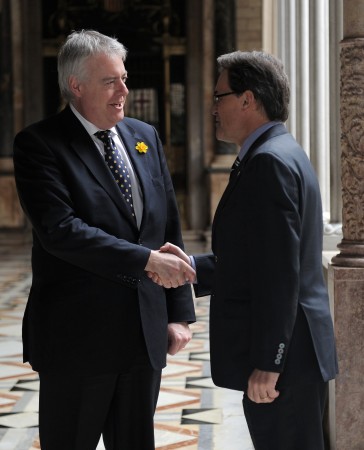By Paul Williams
WRU and Regional relations spiral
The lowest point on earth is Challenger Deep, located at the bottom of the Mariana Trench. That was, until New Year’s Eve 2013. The new lowest point on earth is currently relations between the Welsh Rugby Union and Regional Rugby Wales.
The New Year’s Eve deadline for signing an extension to the Participation Agreement came and went. The regions feel unable to sign the agreement in its’ current state, citing the lack of Pro 12 sponsors and uncertainty over future European competitions and remuneration as their key issues. It’s easy to sympathise with the regions in this instance. Would any of us sign a mortgage without seeing the house, knowing how many bedrooms it has, how much it costs or how much it may be worth in 2019? The WRU’s response was very clear and alluded to the possibility that other clubs or regions could be created or financed and would then fill the vacancies left by the regions in the Pro 12 and any future European competitions. RRW have now issued their own deadline by which they would like the WRU to have responded to their concerns. January 31, 2014 will now see matters come to a head and the intervening four weeks could be as important a period in Welsh rugby as has ever been.
So much for New Year’s Resolutions. New Years’ Revolution may be closer to the mark.
Boxing Day sell out
Welsh rugby saved its best present for Boxing Day. The derbies between the Scarlets and Ospreys and Dragons v Blues were a roaring success in terms of attendance. Both Parc Y Scarlets and Rodney Parade witnessed full houses and felt the associated commercial and atmospheric gains. To viewers of the Aviva Premiership, marvelling at a full house may seem over the top, particularly when Harlequins sold out Twickenham on the December 28. However, Welsh rugby isn’t usually afforded that luxury. The regions, for a number of reasons, have more seats to sell than DFS and to see Welsh grounds teeming with supporters was heart-warming. A rare glimpse of what a healthy regional product can look like. Fingers crossed that we don’t have to wait until next Christmas to witness it again.
Dragons the third region?
The Dragons have long been labelled the ‘fourth’ region. Their performances over recent seasons, whilst rarely short of effort, have resulted in them dwelling in the basement of the Pro 12.
Well, no longer. The Dragons are currently sixth in the table and are lording it over both the Scarlets and the Cardiff Blues. The Dragons’ win over the Cardiff Blues on Boxing Day further reinforced the notion that they are no longer merely brave battlers – but determined winners. They are now not only the second region in Wales, but are currently playing some of the best rugby in Wales too. Lyn and Kinglsey Jones have developed a solid spine of a team and enveloped it with a neat offloading game. The desire to avoid contact whenever possible has seen the Dragons score some accomplished tries and accentuated the skillsets of some of their key players. Toby Faletau, Jason Tovey, Richie Rees and Hallam Amos are all benefiting from the coaching staff’s desire to pass around contact. Whether or not the Dragons remain the ‘second’ Welsh region come the end of the season remains to be seen. But I’ll wager there will be at least one other Welsh region beneath them come May.
Dan Biggar’s kicking class
Dan Biggar has had a tremendous December from the kicking tee. It’s an aspect of his game that occasionally gets overlooked, partly because Leigh Halfpenny’s right boot casts an enormous shadow from which other goal kickers struggle to escape. Up until the Boxing Day fixture against the Scarlets Biggar had successfully kicked 35 in a row. He hadn’t missed since September 28. It’s worth mentioning the kick that he did miss against the Scarlets was from behind the halfway line too – not a simple dab from right in front of the posts. Biggar’s form with the boot has been an enormous benefit to the Ospreys in December and could also be a big boost for Wales in February. Having two 85%+ goal kickers on the field presents an enormous advantage at test level.
Does Welsh Rugby need ministerial intervention?
Welsh rugby’s current issues are well known. The solution is not. Even the most learned administrators, pundits and writers can’t agree on a solution and the disparate array of opinions highlights just how complicated the issues are.
However, the continuing discord and apparent impasse now surely warrants ministerial intervention, no matter how small. Rugby is one of Wales’ national exports. Its impact on the economy, particularly via tourism, is profound. From 1999 to 2011 the Millennium Stadium has attracted £1.2 Billion into the Welsh economy. And whilst admittedly that can’t solely be attributed to rugby, it would be naive to think that Welsh Rugby hasn’t played an enormous part.
Rugby is one of Wales’ key industries and it needs to be treated with the same level of attention as would be afforded to any other failing Welsh industry. I’m not suggesting for one moment that this is as serious the industrial issues that Wales faced in the 80’s. It clearly isn’t. However, a level of ministerial involvement from the Assembly would surely sharpen a few minds.








